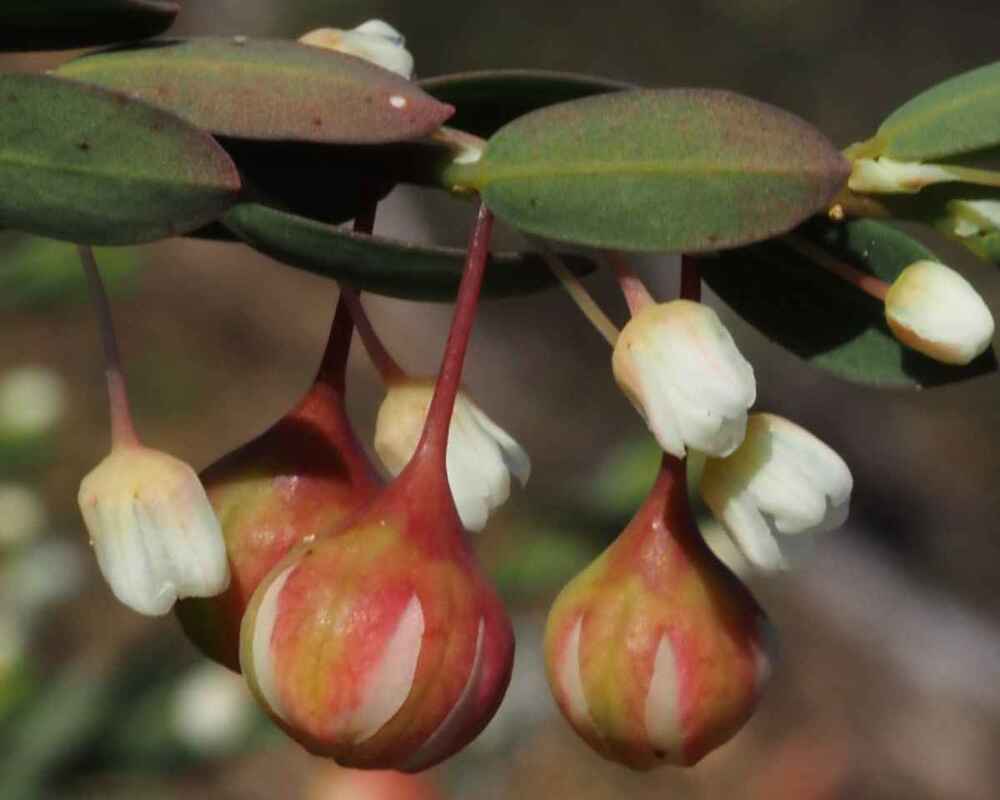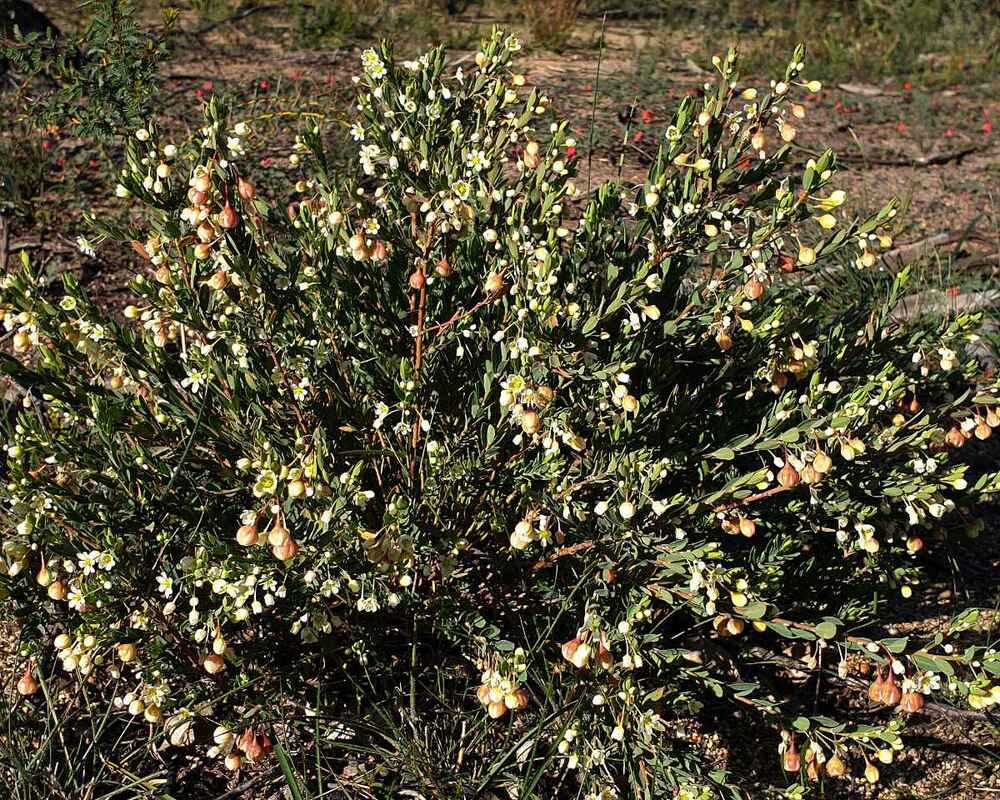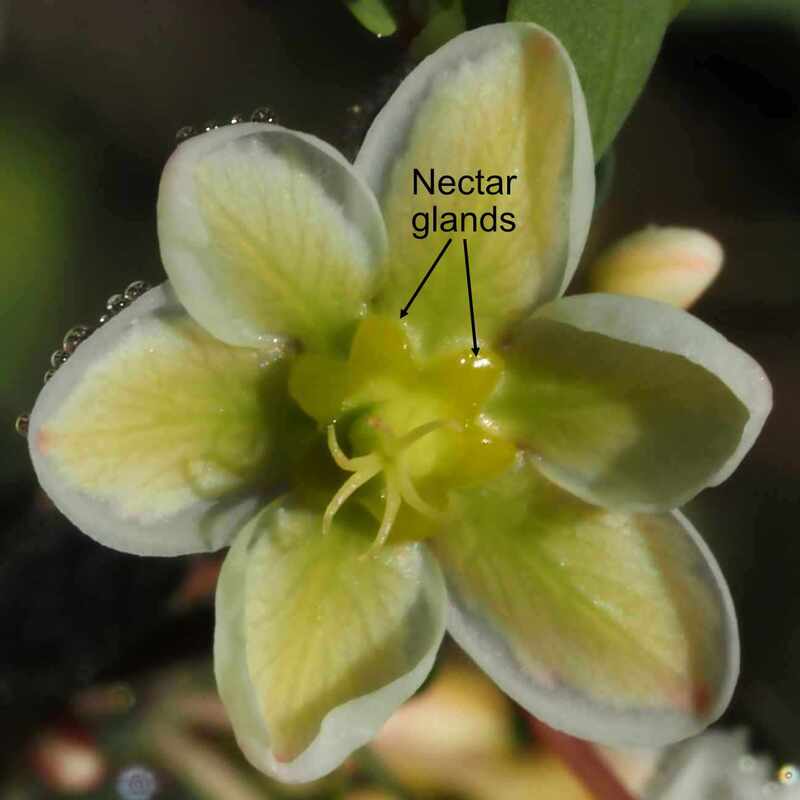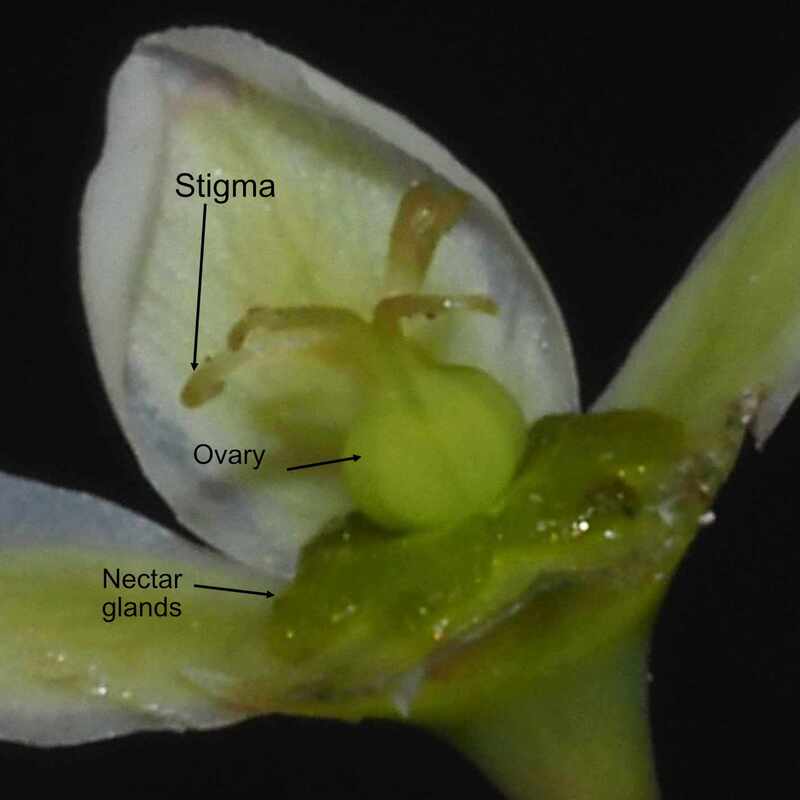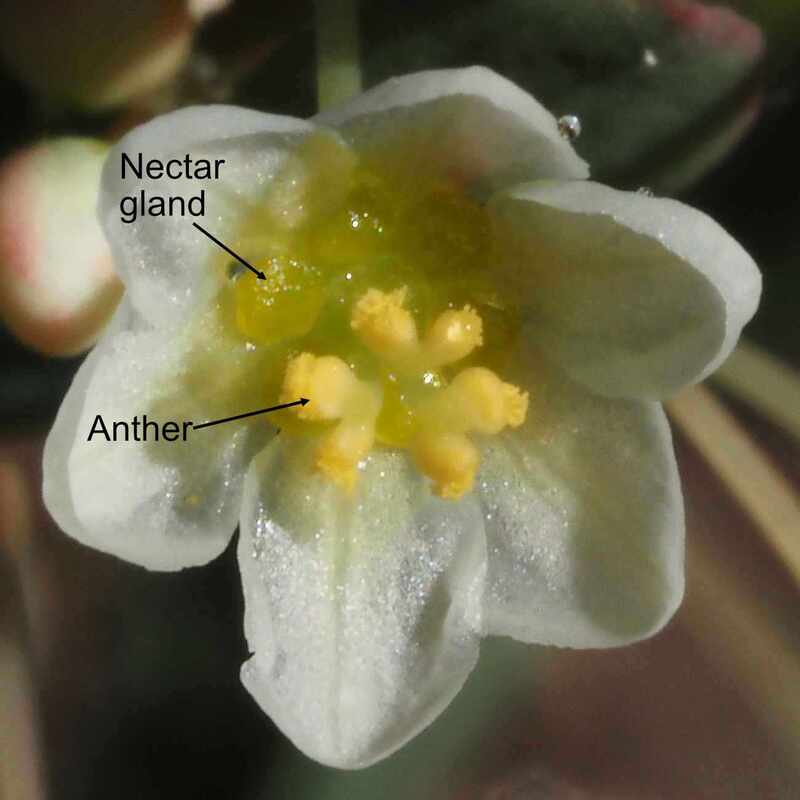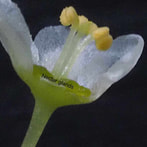Each plant has male and female flowers (monoecious). Females flowers are larger and intermixed with more numerous male flowers.
Other Phyllanthaceae species are pollinated by insects which partially parasitise them.
One pollinator is a moth which fed on nectar, transmitted pollen to the stigma and laid an egg. When the grub hatched it burrowed down the style to the ovary, ate ovules and pupated to complete its life cycle. As the moth left some ovules, to develop seeds, This is a win win for plant and moth. It also occurs in Boronias.
For other species a tiny gall midge fed on nectar at the spongy floral disc of male flowers and laid eggs in male flower buds, picking up pollen and contacting the styles of nearby female flowers in the process. Infested buds developed into sterile galls, within which midge larvae completed their development.
Nature is amazing!
